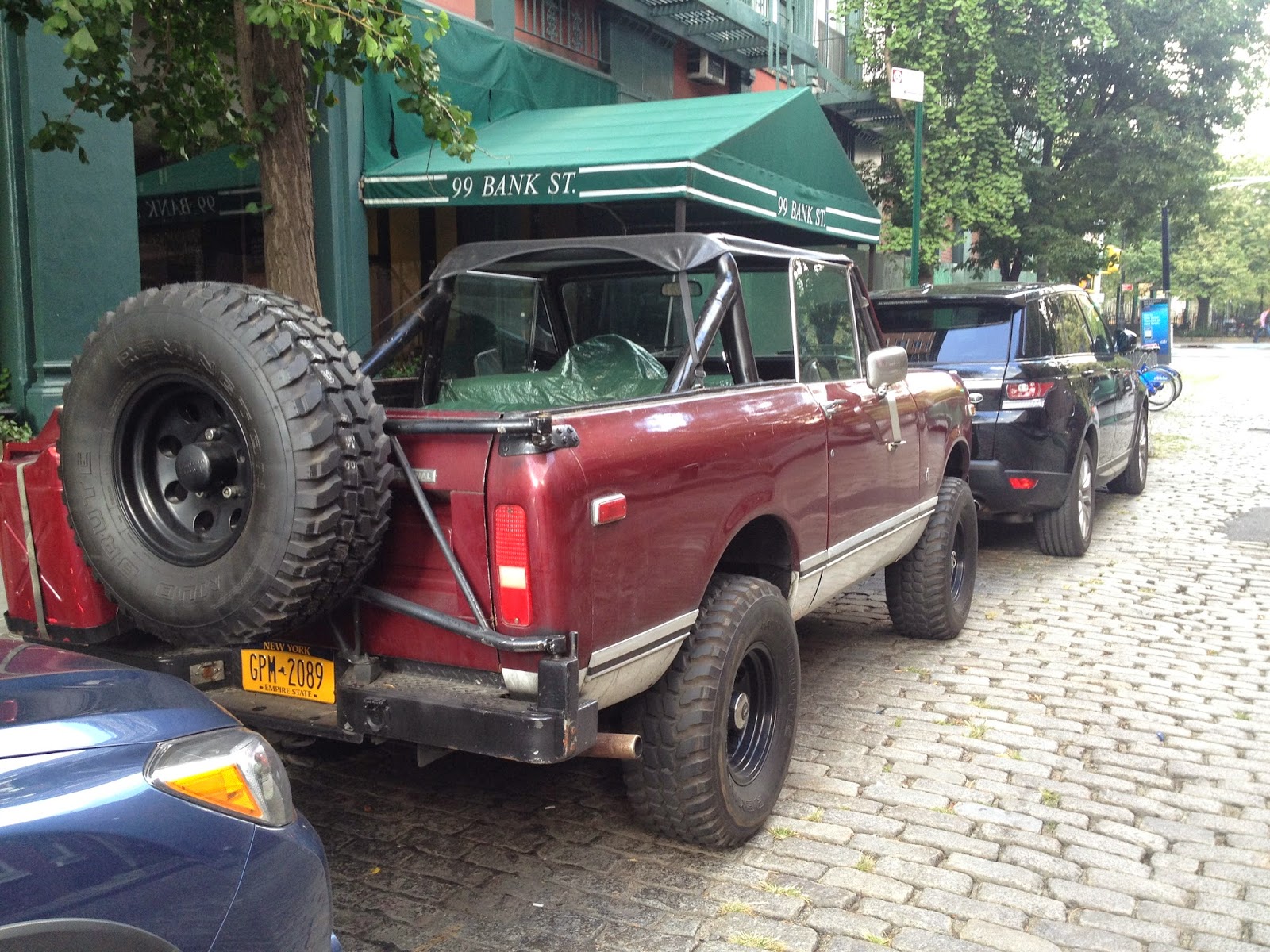SCOUTING IN THE WILDS OF GREENWICH VILLAGE
On this, the coldest day of the year by far (it's currently 13 degrees with gusty winds at 10:30am) I figured I'd post a vehicle that exemplifies summer fun! In the midst of Greenwich Village I encountered this hearty beast:
This is a 1973-1974 International Harvester Scout II. The Scout II was produced from '71-'80 with very few changes (until the redesigned but short lived 1980 model year). The best way to identify a Scout is by the grill. 1975 also had the 14 vertical slot grill but the headlight trim was black and square.
These things are absolutely unstoppable in any condition or terrain. I had a '79 when I was living in the snowfall-heavy zone of North Western Massachusetts and even after 2 feet of fresh snow lay on the ground I was able to drive around the steep unplowed hills near my house. In fact these are equipped with both a high and low setting on the four-wheel-drive, and I only engaged low once to see if it worked. Indeed it worked well but top speed in low was something like 15mph!
This color is very close to the original factory Red (as opposed to Flame Red which is more of a standard firetruck red), but I doubt it's original. Scouts just can't remain this shiny for so many years. The only thing that can stop a Scout is rust.
This example has the metal roof removed and a bikini top installed. The bikini is enough to keep you relatively dry when driving through rain but obviously this owner's not taking any chances.
I couldn't see if this was a stick shift or not but I'm hoping it is. Mine had a 4-speed manual powered by the 304 V8. A larger 345 was available but the 304 served me well. Those round gauges next to the radio are aftermarket add-ons.
It's surprising to see that the Land Rover in front of the Scout is about the same height. The Scout looks to have a minor lift kit to go with the larger off-road tires. From the factory these prodigious beasts were much lower with car size wheels.
This one has hookups for a trailer and an anchor for a hitch. It's crying out for someone to hook up the boat or camper and head out into the sunset!
With the mounted spare and extra gas can this certainly looks ready to head into the wild.
You can see how the bikini top doesn't quite seal up the compartment.
I love seeing this beast in this tony setting.
As I said these things will rust in the desert! The owner's on top of it though and with good reason as they're starting to gain in value with their growing scarcity.
This little IH logo stands for International Harvester, but it is also representing a red man on a tractor. This company made its reputation building all sorts of farm equipment before getting into the truck business. The Scout always sold well and would've continued into the next decade had it not been for a debilitating 172 day strike at their plant in '79. The financial loss IH incurred was so substantial that the company tried to sell the Scout line along with all its tooling to cover costs. The sale fell through and the Scout line went quietly into the night. All 1980 models were cobbled together from already produced parts and are recognizable by their square headlights.
The Scouts you see today usually represent somebody battling rust constantly, or living in a very dry climate. The drivetrains on these rides are legendary for being some of the most durable ever built. Stories of Scouts going 400,000 miles and more without needing a rebuild are common. Basically they would rot away to the point of being dangerous, but you could still reach into a rusty wreck, turn the key, and fire it right up. I'd love to have another!













No comments:
Post a Comment